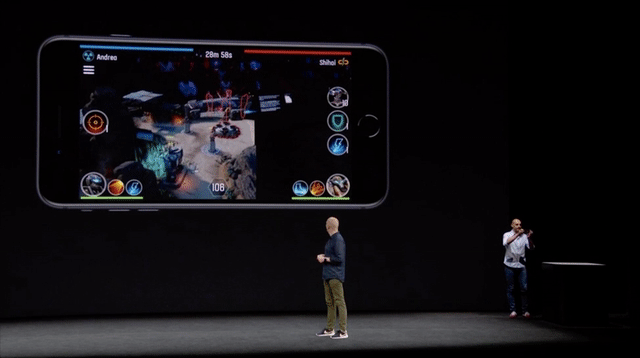
Apple’s fall 2017 Keynote, which at the time of publication is already underway, is the first ever event held at the new Steve Jobs Theater right at the center of the Apple Headquarters in Cupertino. Every year at its fall keynotes, the company makes it major product announcements—last year, they announced the iPhone 7, Apple Watch series 2, and Airpods. This year, most of the hype surrounded the expected announcement of the iPhone 8 (and iPhone X!).
However, we have also been eagerly awaiting the announcement of updates to iOS 11 and its release to the public. First introduced on June 5, 2017 at the Worldwide Developers Conference, the discussion of the new Apple operating system will feature user updates but also developer updates—and it's here where we find the true star of the show: ARKit, the back-end tools which developers can use to create next-generation augmented reality (AR) apps for users of iOS 11 devices.

ARKit has already been in the news a number of times recently, as app developers unveil the capabilities of their forthcoming augmented reality software. When IKEA’s Leader of Digital Transformation, Michael Valdsgaard, announced the launch of the ARKit-infused IKEA Places app, he asked “Imagine taking 30 linear steps, you’d end up in the apartment across the street. Now imagine taking 30 exponential steps. Do you know how far you would go?” Valdsgaard answered his own question: “26 times around the world.” That is the kind of impact he believes ARKis is about to have on the world of apps. “It will change how we do business, how we live and how we do retailing,” he added.
The ARKit is a developer tool for simplifying the creation of AR app experiences. It gives any iOS 11 device with Apple's A9 processor or better (meaning the iPhone 6s or later, a fifth-generation iPad, or an iPad Pro) the ability to recognize flat surfaces and objects and attach virtual objects or graphics to them.

To correlate the digital and real worlds, ARKit uses visual-inertial odometry—a process of combining the data collected by the device’s motion sensors with the computer vision analysis of information collected through the device’s live camera. ARKit picks out notable features in the scene and tracks differences in their position, then compares that information to the motion sensing data. In addition to tracking motion, the ARKit uses the camera to estimate the lighting of the scene, and can then apply the accurate amount of lighting to the virtual objects.

As a result, ARKit is able to seamlessly track real-world space then create and adjust the virtual space accordingly, combining device motion tracking, camera scene capture, and advanced scene processing to provide the illusion of virtual content occupying real-world space.
Now, let’s jump to the stuff we’re really excited to see—what ARKit integration with the iPhone and iPad really means for architects.

3 Ways ARKit’s Augmented Reality Will Change How Architects Work
Present 3D Models Like Physical Models
No longer will you lose sleep over transporting your physical model. You’ll be able to set your digital model "on the table" for a critique, and you won't have to hold your breath hoping the jury doesn't break the roof while they peer around inside. The technology might even move the critique outdoors—walk your iOS device out onto the site and walk through the model at full size, giving a better understanding of the design's relation to its context.
Ditch the Tape Measure
If this preview of MeasureKit is to be believed, you’ll be able to measure floor-to-floor heights by riding the elevator, measure the walking distance from one side of the building to the other, and quickly figure out structural bays, glass sizes, and ceiling heights. As-built drawings, precedent studies and case studies will never be the same again.
Combine Photographs and Sketches More Accurately than Ever Before
In recent years, apps such as Morpholio's Trace have already made it easier than ever before to sketch ideas over photographs of an existing space. With ARKit, those sketches could potentially include accurate data about dimensions (furthermore, Morpholio has confirmed to ArchDaily that they plan to release new tools optimized for ARKit with the release of iOS 11 in the coming days).
This article has been updated with images from today's keynote.







